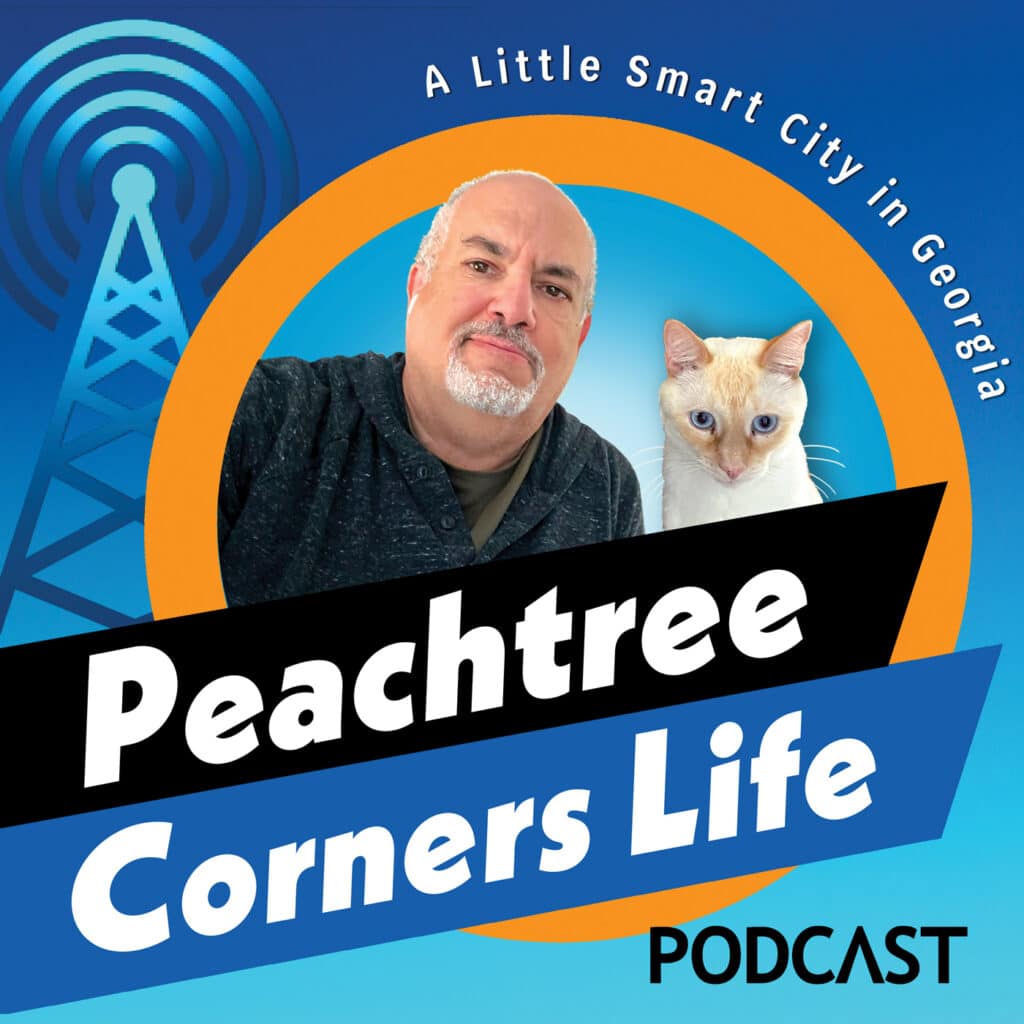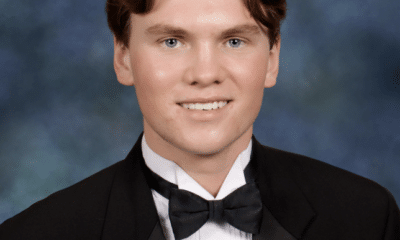Parks & Recreation
A Look at Simpsonwood Park’s Past and Plans for Future Development
Published
3 months agoon
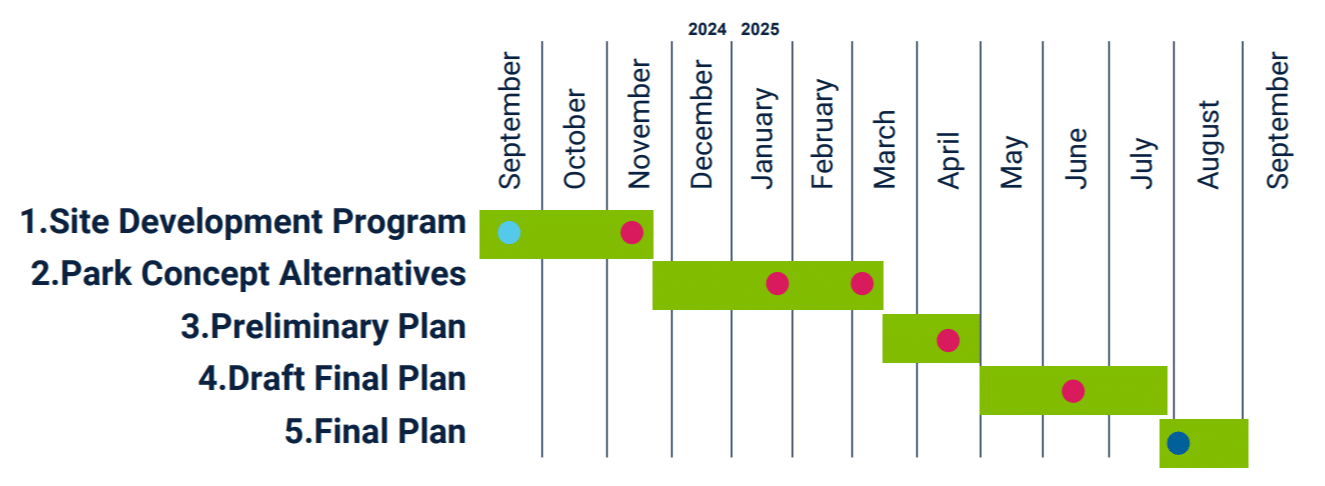
Source: Peachtree Corners Post 2 Councilmember Eric Christ’s recent newsletter.
The Simpsonwood Park Citizen Steering Committee met again in January and reviewed three concept alternatives presented by the Gwinnett County Parks Department. There was lots of voting by the committee members on the various potential plan elements, as well as input from the general public during the public comment portion of the meeting.
Overall, the plans continue to move towards passive and natural uses — more than in the 2016 plan and far more natural when compared to the 700-person conference center and recreation facilities operated by the Methodist Church from 1985 until 2014 at that location.
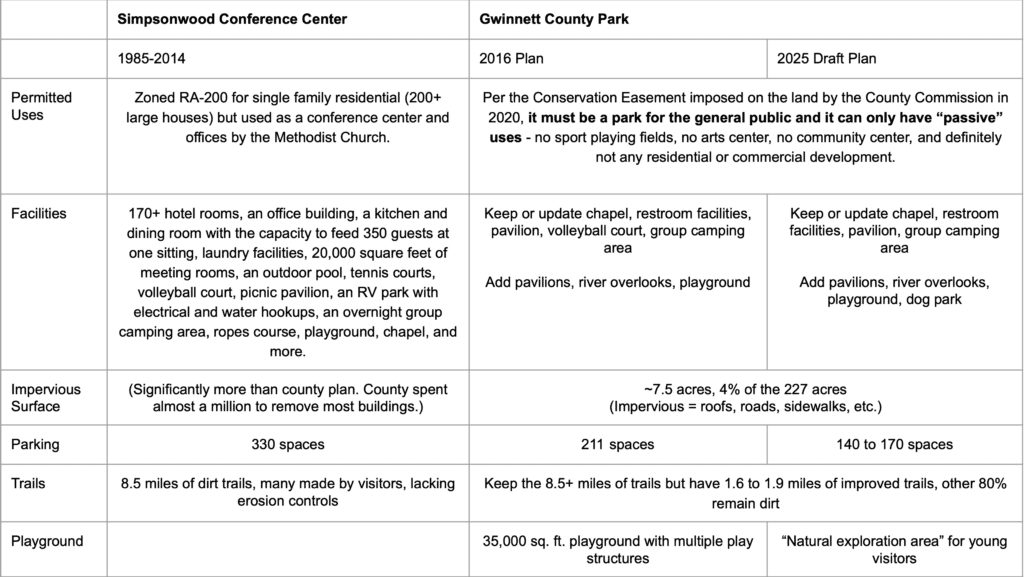
- Buildings — after the purchase, the county spent almost a million dollars to remove multiple buildings with 170+ hotel rooms, an office building, a kitchen and dining room with the capacity to feed 350 guests at one sitting, laundry facilities, 20,000 square feet of meeting rooms, an outdoor pool, tennis courts, an RV campground and more while retaining the chapel, a pavilion, a sand volleyball court and an aging restroom building. The draft 2025 plans add or update restroom facilities, one or two pavilions and river overlooks.
- Impervious surface — the total of the land that would have an impervious surface (think anywhere that rain can’t fall directly on the ground such as roads, roofs, sidewalks, paved parking areas, etc.) would be about 7.5 acres under the 2025 draft plans. This represents about four precent of the 227 acres and is significantly improved from when the Methodist Church had many buildings on the property.
- Parking spaces — there were over 330 parking spaces on the property when the county purchased the conference center. The 2016 County Plan called for 211 spaces. And the draft 2025 plan recommends even fewer spaces, between 140 and 170 total spaces.
- Trails — to increase access to the park for the disabled and for parents with strollers, the draft plans call for 1.6 to 1.9 miles of improved trails, but the majority of the ~8.5 miles of trails in the park would remain dirt.
- Playground — in 2016, the county had a baseline requirement that every county park must have a traditional playground for younger visitors. While there was a small playground on the property when it was a conference center, the 2016 plan called for a new 35,000 square foot playground with a variety of play structures. As of 2025, a traditional playground is no longer a county requirement, and the draft plans have a “natural exploration area” for youngsters instead.
- Dogs and a potential dog park — The number one complaint I hear from Simpsonwood Park visitors is dogs being off leash. While keeping your dog on a leash and picking up after them are already park rules, apparently some dog owners treat Simpsonwood Park as a 227-acre dog park and have gone so far as to tell other visitors “if you don’t like dogs running up to you, you should probably not come to Simpsonwood.” This is obviously unacceptable. It’s a violation of the park rules and disrespectful to other visitors. People should not have to carry mace spray to protect themselves from unleashed dogs in the park. Nor should hyper vigilance be required to avoid stepping in a pile of dog waste. It may seem counterintuitive, but some dog park advocates are saying that having a small, fenced area specifically for dogs within Simpsonwood Park will make it easier to enforce the “dogs must be on a leash” rules throughout the rest of the park.
Next steps
Once the Steering Committee completes their work later this year, the proposed plan will be reviewed by the Gwinnett Recreation Authority. You can share your thoughts with the Authority board members here.
You can find links to Councilmember Christ’s social media pages or sign up for his newsletter at linktr.ee/votechrist.
Peachtree Corners Magazine reported on the most recent Simpsonwood Park community meeting. You can find that article online here or in the February/March issue.
Related
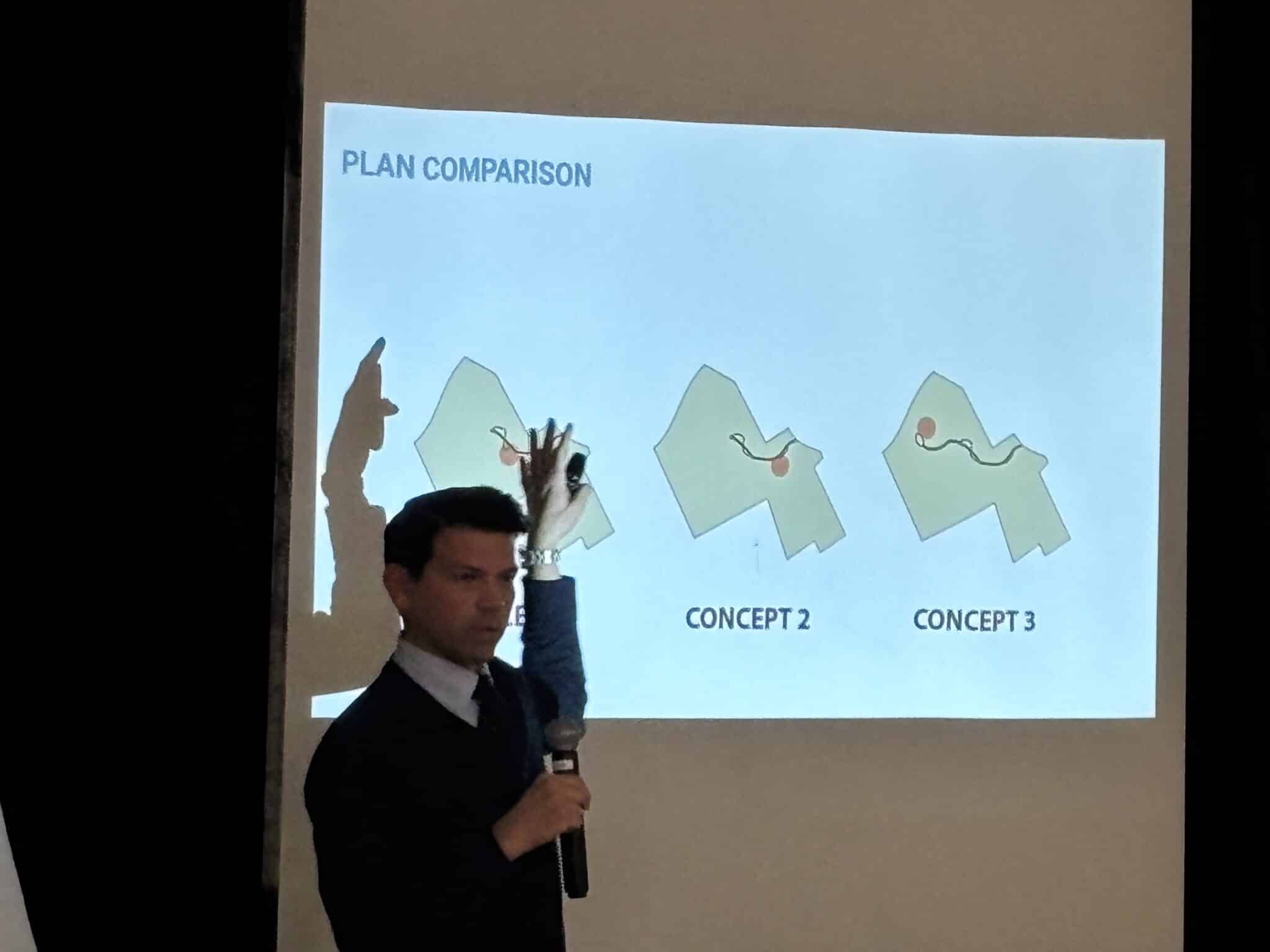
Citizen Steering Committee continues redesign plans with many residents against any changes
The second meeting of the Citizen Steering Committee for the Simpsonwood Park Master Plan took place on January 15 at Pinckneyville Community Center and focused on a presentation and discussion of three conceptual plans.
- Concept 1 centered on a central hub
- Concept 2 centered on an eastern hub
- Concept 3 centered on a river hub
According to Carlos Perez, president and founder of Perez Planning + Design, LLC (PP+D), a research-based firm contracted to facilitate the park redesign, key features for each include vehicular circulation, parking areas, multi-use paths and program areas like dog parks and nature exploration zones.
Perez added that the plans aim to balance natural resource protection with recreational needs, emphasizing ecological management and sustainable trail systems.
The committee emphasized the importance of community input, particularly on the balance between parking spaces and natural areas, as well as the need for clear communication with county leadership.
Concept 1
- 100 paved spaces
- 40 overflow parking spaces
- 1.9 miles of paved trails
- 5.7 miles of hiking trails
- 7.3 acres of impervious area
“The idea is that we have this existing road that would be improved, but done in a way that preserves that feel of a natural park,” said Perez.
He added that all of the models will have an access road to the Wood Creek pump station. The Department of Watershed Resources must be able to get vehicles and equipment in for maintenance and repairs. It wouldn’t change much from the existing road. However, in certain areas, the road will need to cross streams and creeks.
“We would do that with a wood bridge consistent with the character of the site,” said Perez.
He added that much of the parking will be near an area being called the Great Lawn. There will be additional parking near the chapel, with an overflow parking area of 20 to 30 spaces for events that may take place in the park.
“It will be done in a way that’s paved but integrated as cleanly as we can within that environment,” said Perez. “The overflow parking would be a green space area that, when parking is not there, then it just looks like an open field with trees around the edges.”
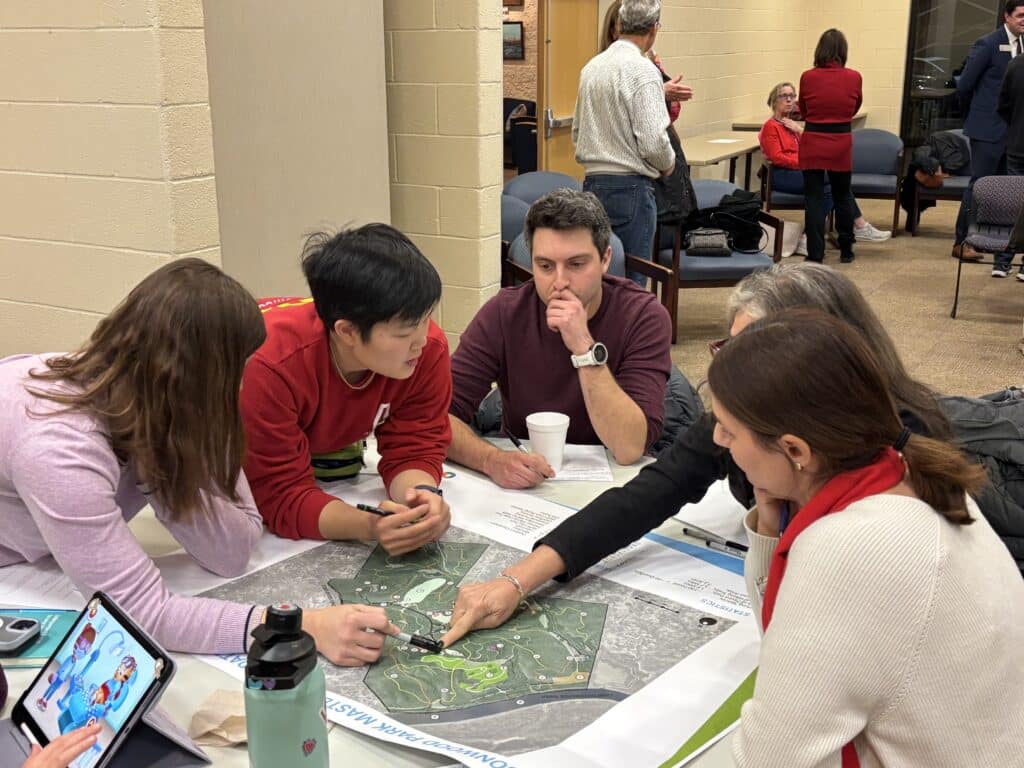
The primary multi-use paths are consistent with what’s currently in use at other parks throughout the county.
“The idea is to look at a potential two loops, one that’s about a mile and one that’s a little longer — 1.5 miles — going around a portion of the site and then connecting back to Jones Bridge,” he said. “Then there is the accessible access path from the parking areas and from the hubs with sidewalk connections that connect the paved, multi-purpose trails to the different hubs that are located in this area.”
Perez added that there will be boardwalks to cross over wetlands, creeks or streams as needed. There would also be some small pavilions — a larger one in the central part, near the chapel and two smaller pavilions.
This concept has the potential for a light camping area. The Great Lawn could serve as an outdoor classroom. There’s also a nature exploration area and space that could be a dog park. Perez also mentioned two overlooks along the river with a restroom nearby. This plan calls for a restroom near the central area and another near the chapel as well.
“There’s also a secondary hiking loop and connector trails that happen throughout the park,” said Perez. “These would be very natural in appearance, not improved.”
Concept 2
- 90 paved parking spaces
- 65 overflow parking spaces
- 1.67 miles of paved trails
- 6.6 miles of hiking trails
- 7.1 acres of impervious area
“Concept number two looks at moving the hub closer to the road,” said Perez. “We’re calling it the Great Lawn hub.”
He added that, similar to the first plan, this one has an access road to the pump station and also access to the cell tower. There will be parking areas near the Great Lawn, a campground area and near the chapel.
“We have a slightly different orientation of the multi-purpose trail, including one that circles on the edges of the Great Lawn and another one that circles around the middle area, one a little closer to the overlook and then a connection to the road.”
Another difference is an area with walkways near the chapel, an interpretive, accessible path area and more accessible boardwalk.
“In terms of the structures, we have some of the existing chapel, a large pavilion and two small pavilions near the chapel,” he said. “There will also be a restroom or a maintenance building in that location.”
This model, too, includes an area for a dog park, a nature exploration area, a campground in the Great Lawn area and a meadow. There will be primary hiking and secondary hiking loops that circulate throughout the site and connect to walking paths.
Concept 3
- 130 paved parking spaces
- 40 overflow parking spaces
- 1.75 miles of paved path
- 6.5 miles of hiking trails
- 7.4 acres of impervious area
“We’re calling concept number three the river hub,” said Perez. “This concept shows that main entrance road going a little farther into the site near the river. And this was in response to those river experiences and trying to get accessible locations closer to the river, to get people to the river.”
The river hub would include paved parking and overflow parking. There would still be parking near the chapel. This model also includes picnic areas. The plan has a one-mile, multi-purpose loop and another half-mile loop that connects to the road and accessible paths.
The model has two large pavilions, four small pavilions and the chapel. It also includes a labyrinth, a natural play area, a dog park and a camp ground.
Committee and community feedback
The committee members who were present all consistently agreed that Concept 3 was their least preferred plan. Although they had concluded in the November meeting that they didn’t want a dog park or a playground, some form of both were in all of the designs.
They were also lukewarm on the camping component, arguing that people looking for a place to smoke marijuana, drink alcohol and do drugs were more likely to use the facility than any scouting groups.
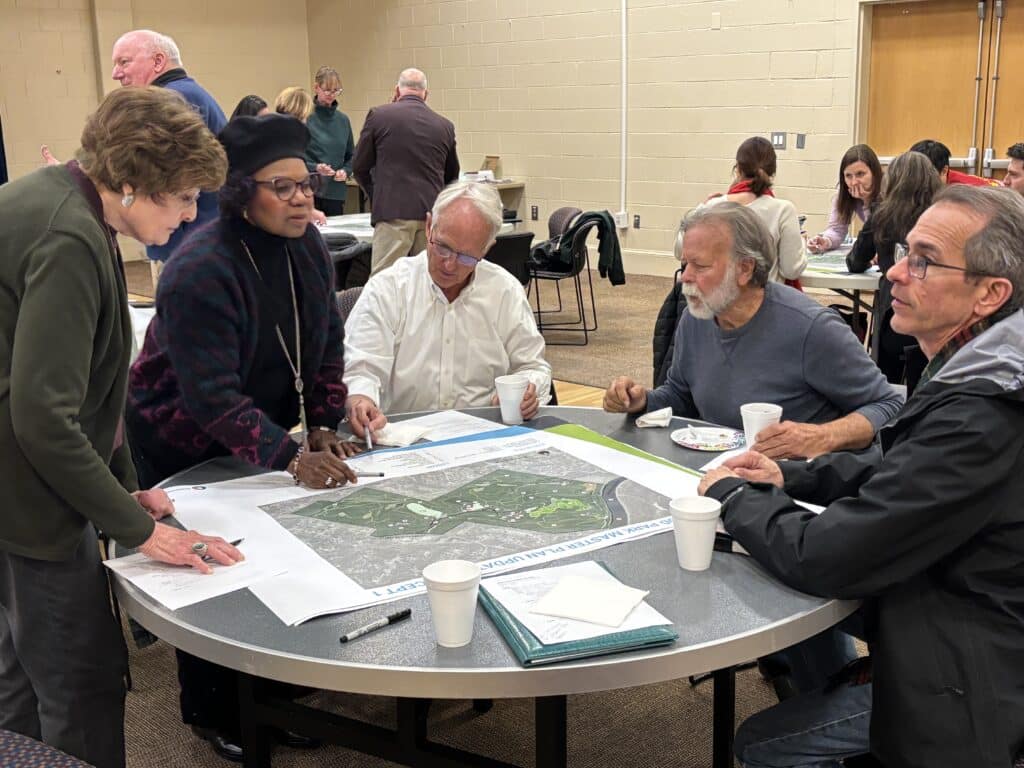
Some were against any paved paths at all — even though that would limit access for those with disabilities or families that needed to use strollers. And just about everyone wanted to see fewer — not more — pavilions.
Preferences leaned towards Concept 1 for its main area layout and Concept 2 for its limited number of concrete paths. The community emphasized preserving the park’s natural state, citing environmental impacts and overdevelopment.
“I don’t know if y’all know there is a petition going around,” said committee member Danielle Leahy. “It has 1,200 people that [have] signed it that also agree. I’m just letting everyone know we are supposed to gather information, and that’s what I’ve done.”
Leahy said she isn’t satisfied with the way the Citizen Steering Committee is progressing.
“I found it disconcerting that features like the playground and dog park — that were completely nixed by the steering committee last time — were reintroduced on every single plan, nonetheless. The same could be said for the campgrounds, as they had less than 50 percent support at the first meeting, yet they appeared on each plan,” she said.
“Unfortunately, this sends the message to my group and the steering committee that our voices are ultimately not being heard. Gwinnett County seems to be pushing forward with their own hidden agenda no matter the opinions of the steering committee.”
Friends of Simpsonwood
Leahy founded Friends of Simpsonwood, a group of concerned citizens that largely want to see Simpsonwood Park remain pretty much as-is. She and about 50 members of the group attended the meeting. Dressed in red, they wanted to make it known that they were a strong voice in the community.
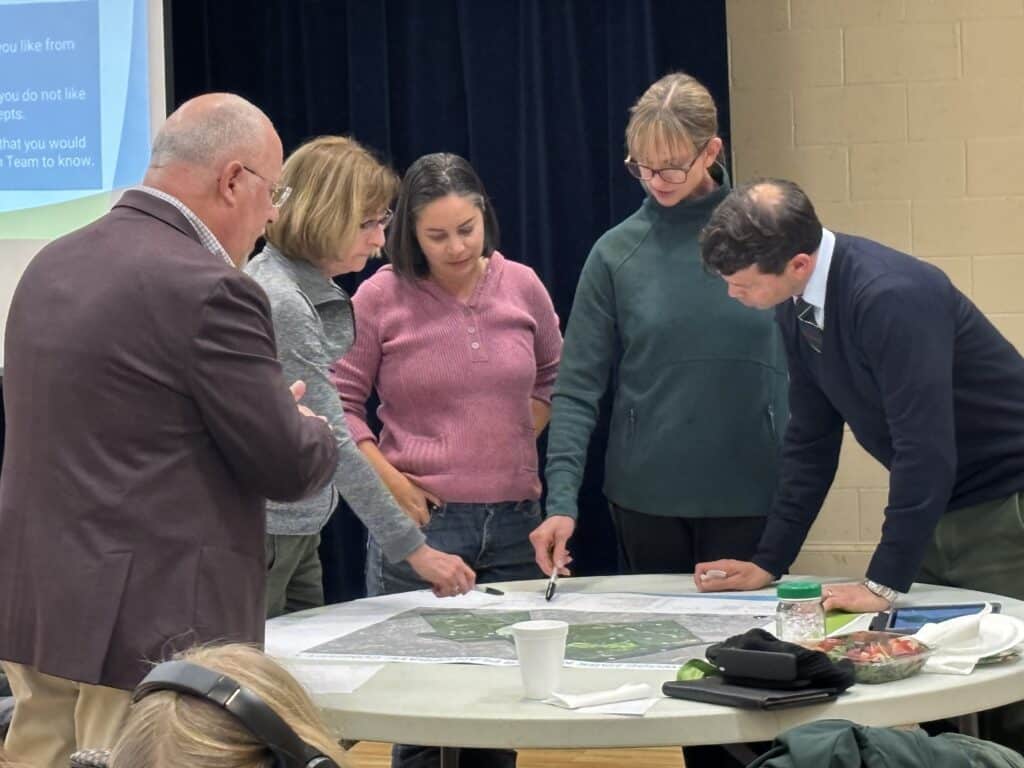
They had three main issues with the Citizen Steering Committee that were posted on their website. Peachtree Corners Magazine presented those complaints to Parks and Recreation Deputy Director Glenn Boorman. His written responses are below:
- The Steering Committee was quietly selected by Gwinnett County, with no transparency about why some citizens were selected and others were not. When asked at the Simpsonwood public meeting in September if members of the public could nominate and/or vote on members of the committee, Gwinnett County denied that request. Without full transparency about who is representing us (and why), we do not have fair representation.
Response: The attached slide was a part of the presentation at the November meeting explaining how the Citizen Steering Committee was established. Besides the original members that returned, the applicants were reviewed for location of residence (one was, in fact, not in Gwinnett County) to ensure an even geographic spread surround the area, review of recreation interests or activities looking for a broad spectrum of interests as well as community mindedness to represent the community.
- The Citizen Steering Committee is not allowed to discuss unwanted park features. During the November meeting, the members of the CSC were openly told that they are not allowed to discuss any features that they do NOT want for the park, only features they do want. This narrow form of discussion disallows real thoughts or opinions to enter the arena.
Response: There are specific activities and features which are not allowed on the property as dictated by the Conservation Easement. There are uses which are planned for other park locations. There is no need to have these items (such as active fields for sports and mountain biking) as part of the discussion.
- The Citizen Steering Committee does not have a vote. As of right now, there are no plans for the CSC to actually vote on any features for the park. As described by one official, the CSC is simply “an advisory committee” to Gwinnett County.
Response: This statement is incorrect, there [was] voting on features … at this meeting.
Public comments
The last 10 minutes of the meeting were reserved for public comment. The organizers allotted five speakers to have two minutes each.
Even though he doesn’t live in Gwinnett County, Malte Weiland works at the Peachtree Corners office of Siemens as a sustainability professional. He said he’s in the park about three times a week. He’s also been on the board of the Dunwoody Nature Center for eight years and said he’d be willing to lend any expertise to the park master plan.
“Our park has very similar constraints and also similar guiding principles to what I heard tonight, and we’ve got some semi-innovative ways that we approach that, particularly around our nature-based education and the long-term preservation of natural resources,” he said. “So if anyone’s interested in learning more about how we approach that and how we help this process, or maybe impact the design, I’m happy to meet with you more or just share that as well.”
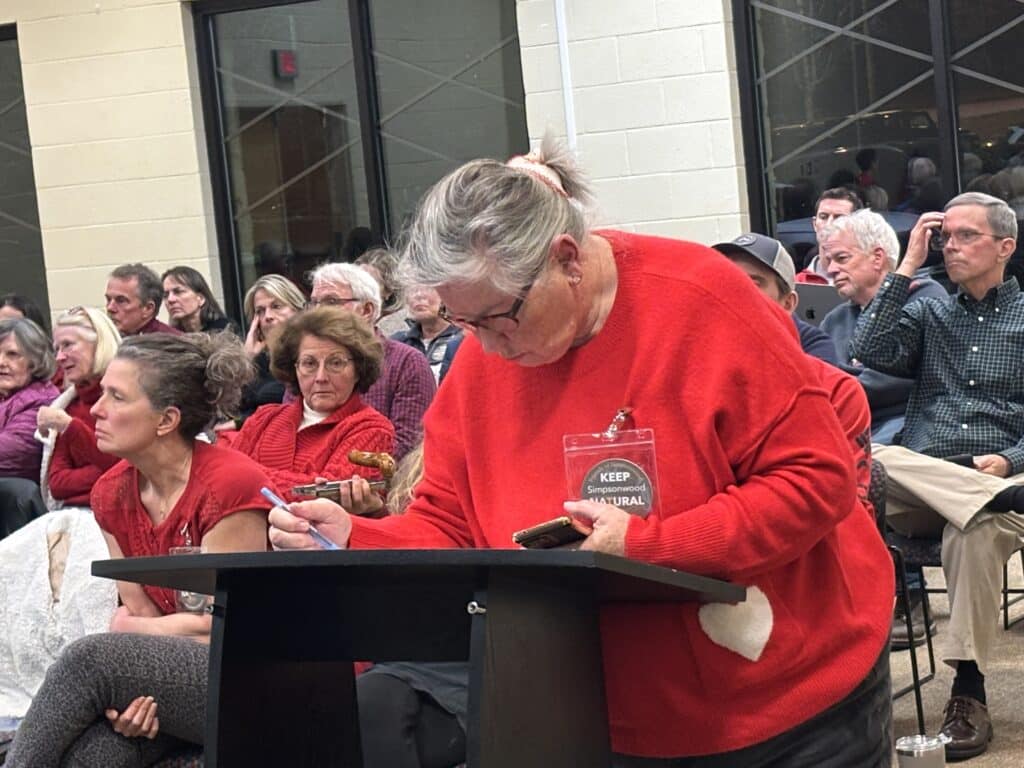
Debbie Mitchell lives in North Manor and is worried that proposed changes will negatively impact the quality of life for those near the park.
“My house is [to] the back of the church, so I’m very close,” she said. “My concerns are the environmental impact to the humans that live there, as well as the nature and the fact that you’re enhancing something and bringing more into an area of low trash, low light, low sound. I hear that there’s going to be events. And I don’t want to hear rappers in my yard, and that’s basically what it would be.”
She’s also concerned that the enhanced amenities will increase traffic and cause congestion.
“The roads have not been widened. They’ve not been prepared for a park that’s going to have events and have 200-plus cars,” she said.
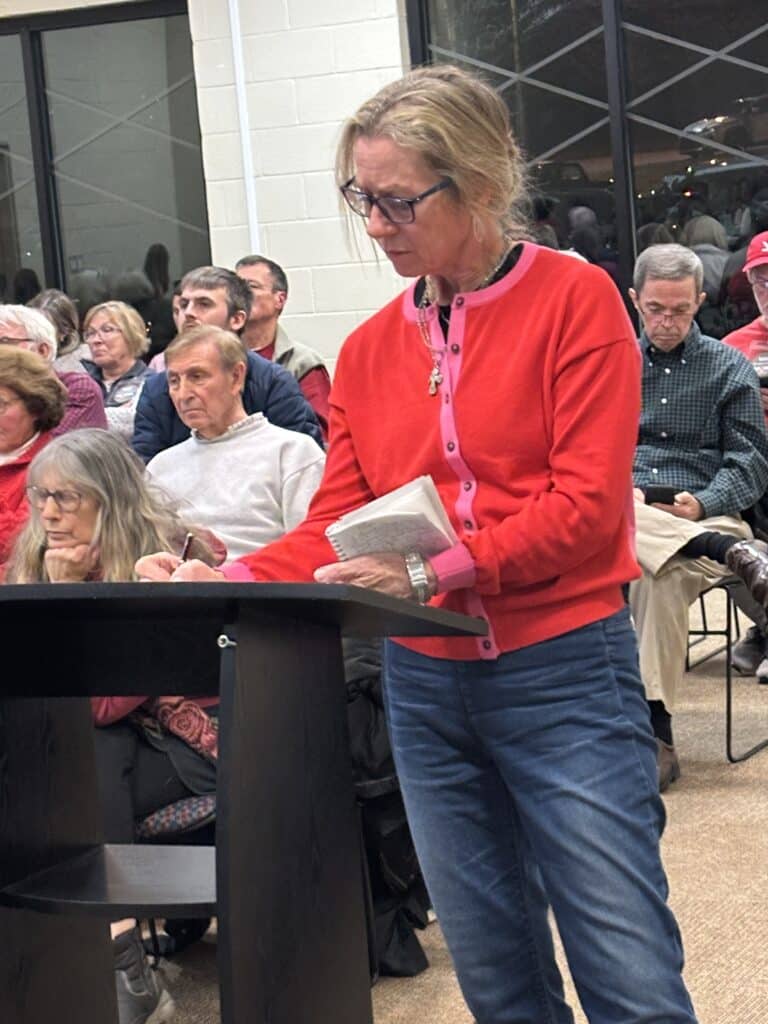
Pam Prehmus has lived in Peachtree Corners for 43 years. She remembers when it was mainly horse farms and natural greenery.
“Simpsonwood is unique. It is the only park where my daughter and [her] four children, as well as my other grandchildren that come to town, are able to hike in real woods, not man-made woods — real meadows— and play creatively without man-made logs put someplace,” she said. “You talk about preserving Simpsonwood, but you want to bring in more cars, more groups of people, which may actually exacerbate your problems that you’re trying to fix. This causes erosion, disturbances and affects public safety.”
The remaining speakers echoed similar concerns.
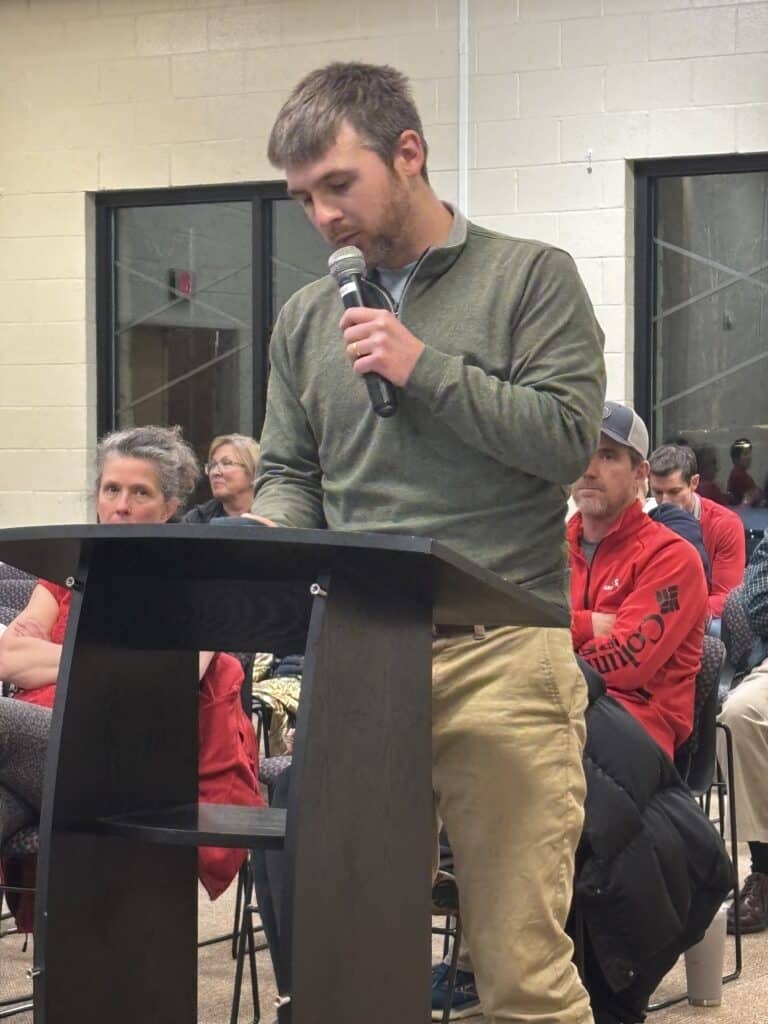
“This renovation goes against the three self-directed guiding principles set by this committee to address,” said Jack Head. “The watershed special protection area on the river has proposed items on each concept. … Those river overlooks would invite trash into the river. The parking spaces would clear cut trees. It would not be natural.”
Next steps
The committee had been scheduled to tour Simpsonwood Park, as well as two others in the county, but inclement weather caused the county to postpone the outing.
The next Citizen Steering Committee meeting is set for 6:30 p.m. on March 4 at Pinckneyville Community Center and is open to the public.
Photos credit: Arlinda Smith Broady
Related
Parks & Recreation
Latest Updates and Improvements at Jones Bridge Park
Published
4 months agoon
January 13, 2025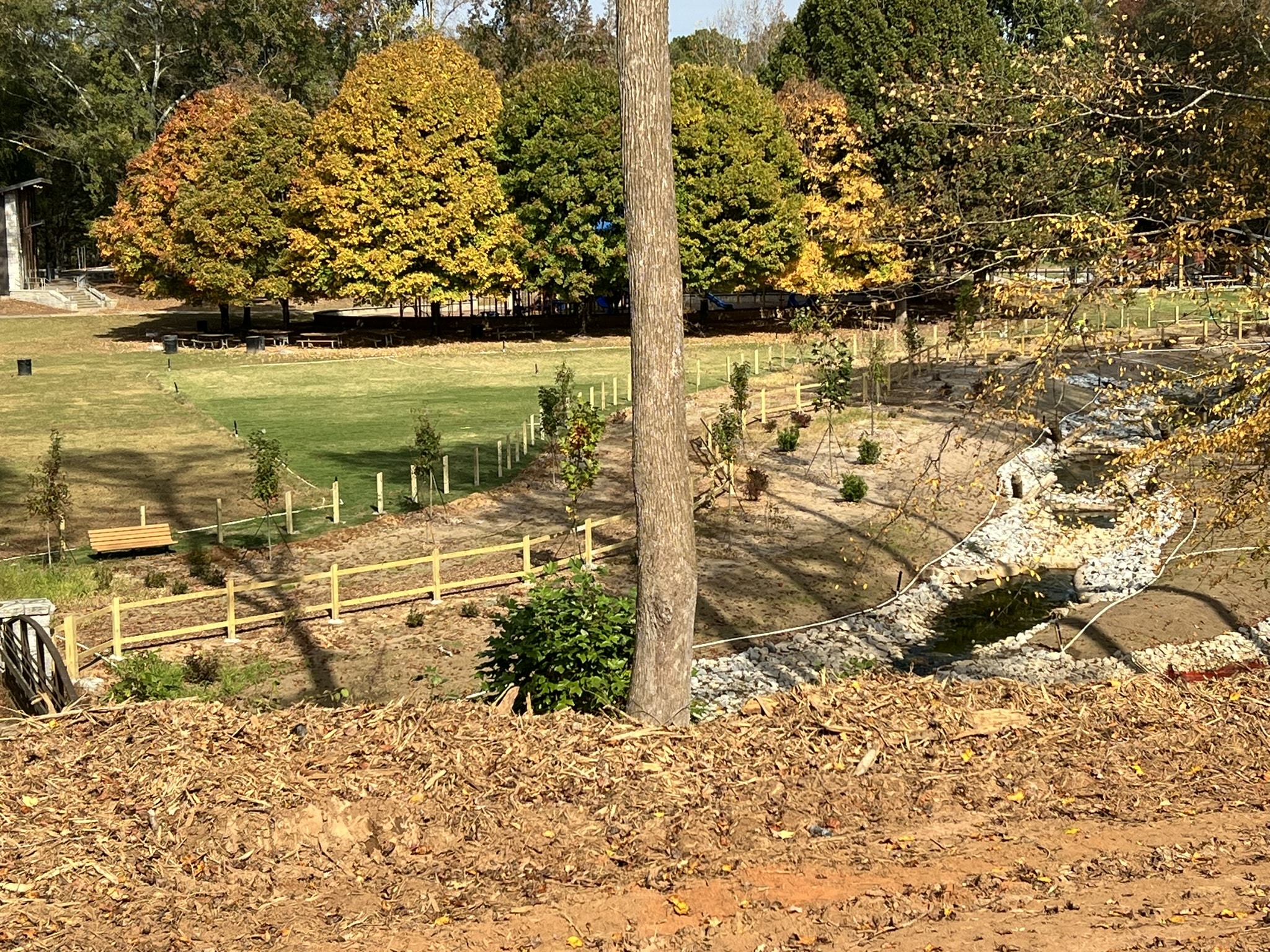
City and county officials met again with concerned citizens to discuss the progress of ongoing issues at Jones Bridge Park
In its online Best Parks guide, Explore Gwinnett lists Jones Bridge Park as the “best place to paddle.”
“Next time you have the urge to paddle, get your hull on the Chattahoochee via Jones Bridge Park in Peachtree Corners. Surrounded by trees and accented by shoals, this shady patch of river is a beautiful place to canoe, kayak, or set up a picnic. In addition to river access, the 30-acre park is also equipped with restrooms, pavilions, three soccer fields and a sand volleyball court. It is also a popular location for fishing and for admiring ducks and geese,” according to the organization’s website.
Nearby residents consider the popularity of the park a blessing and a curse with weekends and holidays crawling with unmanageable crowds. They point out that many visitors disregard posted rules for parking and littering. They’re also upset that, in their estimation, most of the overcrowding is due to people outside the area and the county encroaching on amenities funded by their tax dollars.
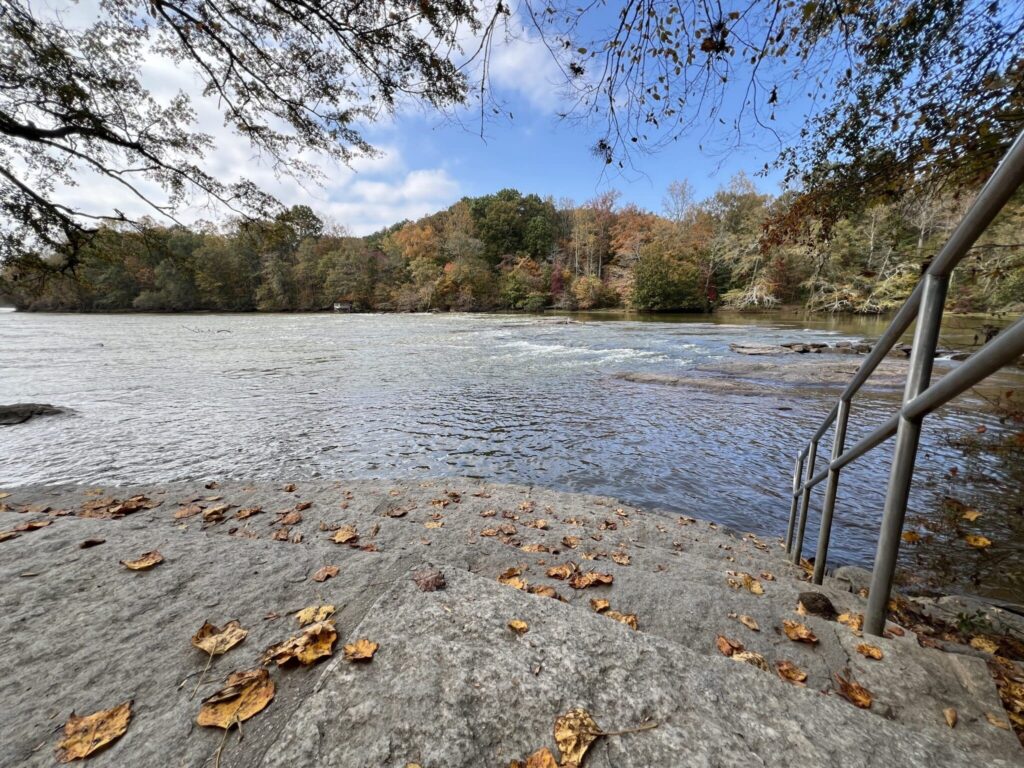
“I’m here today because just over the last four or five years, I’ve seen the gradual decline in the park itself,” said one concerned resident. “I mean, you go, it’s overcrowded. You got cars parked on curbs, and it’s just not a pleasant experience of what it was intended to be.”
Just about every one of the two dozen or so residents in attendance at a community meeting on January 8 at Pinckneyville Community Center agreed. The gathering was a follow up to two earlier meetings — one in summer and another in fall 2024 to address residents’ concerns about traffic, noise, unauthorized access, crime, upkeep and new projects at the park.
Park maintenance, future plans
The day before the meeting, Gwinnett County approved its budget for 2025. A key change was moving the Parks and Recreation Department to a stand-alone line item. It was previously part of the Department of Community Services.
With an allocation of $67,563,433 of the county’s $2.67 billion budget, the commission said there will be a focus on maintenance and repairs for parks and recreation through additional ground crews, vehicles and equipment to enhance residents’ experience at the county’s 47 open parks and facilities.
Delighted to share the news with the audience, Parks and Recreation Deputy Division Director Sarah Barlow offered a few key updates since the last meeting in October.
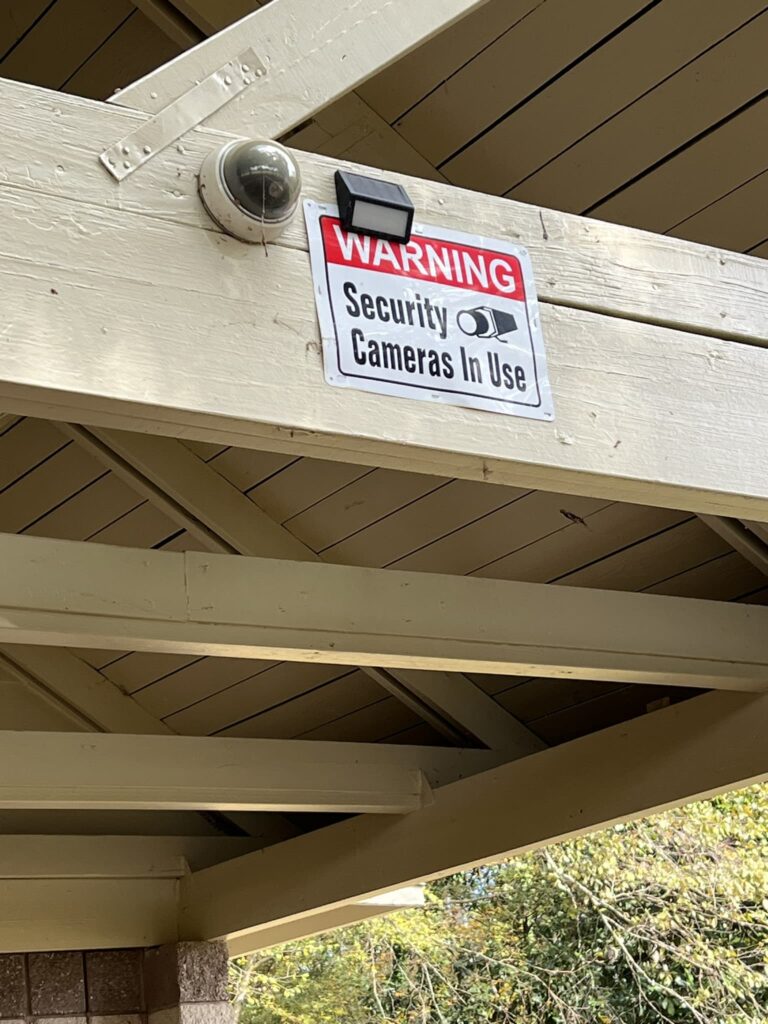
“I had the opportunity to meet with Seth Yurman, the assistant city manager with Peachtree Corners,” she said. “There are a couple of cameras that are potentially going to be donated, but unfortunately, it’s not that simple. This is government. So we do need an inter-government agreement. … And it turns out that we need internet in the park to run those cameras.”
Currently, there is no Wi-Fi set up in the park.
“That is not infrastructure we have in place at this exact moment in time, so we are working on [that],” Barlow said. “It is still very much in development, but we do not have those two crucial pieces in place just yet.”
Multiple park projects
On a more positive note, she announced that the stream restoration project is completed. Some attendees were confused at the news as there are still large pipes on site.
“The sewer project is still being worked on,” explained Barlow. “The park does still look rough. It’s two projects going on with our water resources.”
She added that once everything has a chance to grow in and fill out, it will be a thing of beauty. It’s estimated, however, that the sewer project may go on for another year.
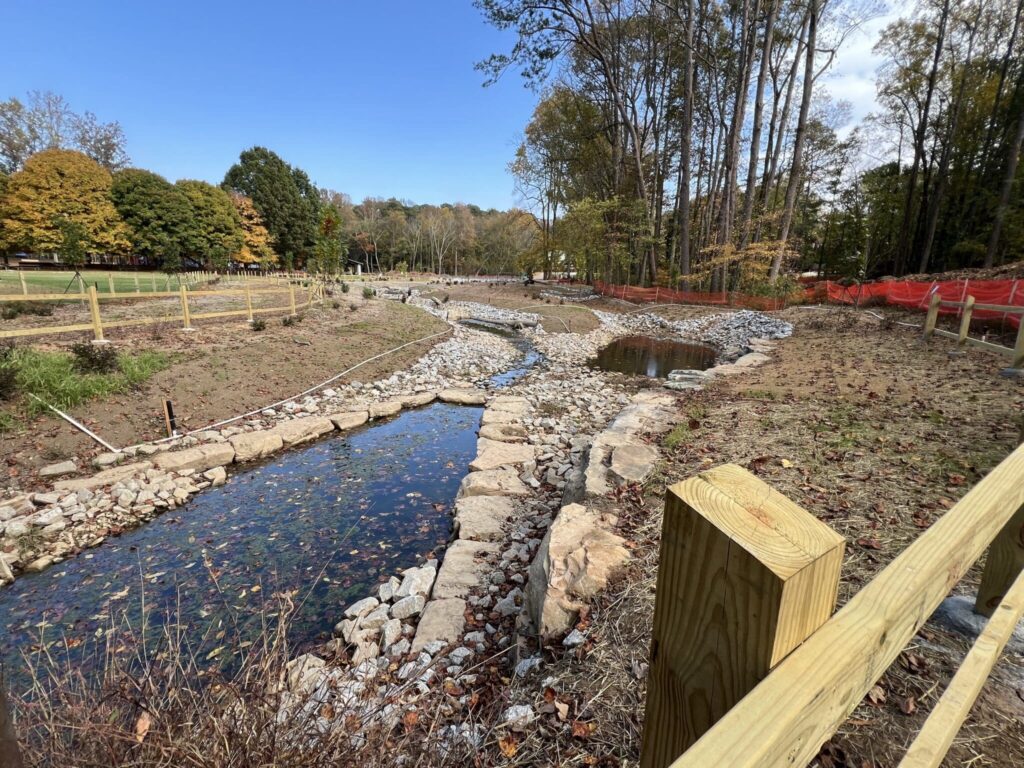
In addition to the sewer project and plans to add security cameras, Barlow shared that the plan to cut power to the pavilions during hours that the park is closed is also moving forward.
And she added that “Once everything kind of gets settled in and we get to be okay for finance to start spending, we will be green lighting the tree project at the edge of the soccer fields.”
“We’ll get those trees purchased and planted when the weather isn’t freezing like we have now,” she said.
Traffic-calming and parking measures
Additionally, Sylvia Goalen, traffic safety division director for Gwinnett Department of Transportation, gave an update on speed calming and parking at Jones Bridge Park.
“We were able to implement additional speed humps going into the park,” she said. “Once the construction that parks shared with you is completed, we’re going to continue the speed humps inside the park to ensure that traffic stays within the speed limit of those areas.”
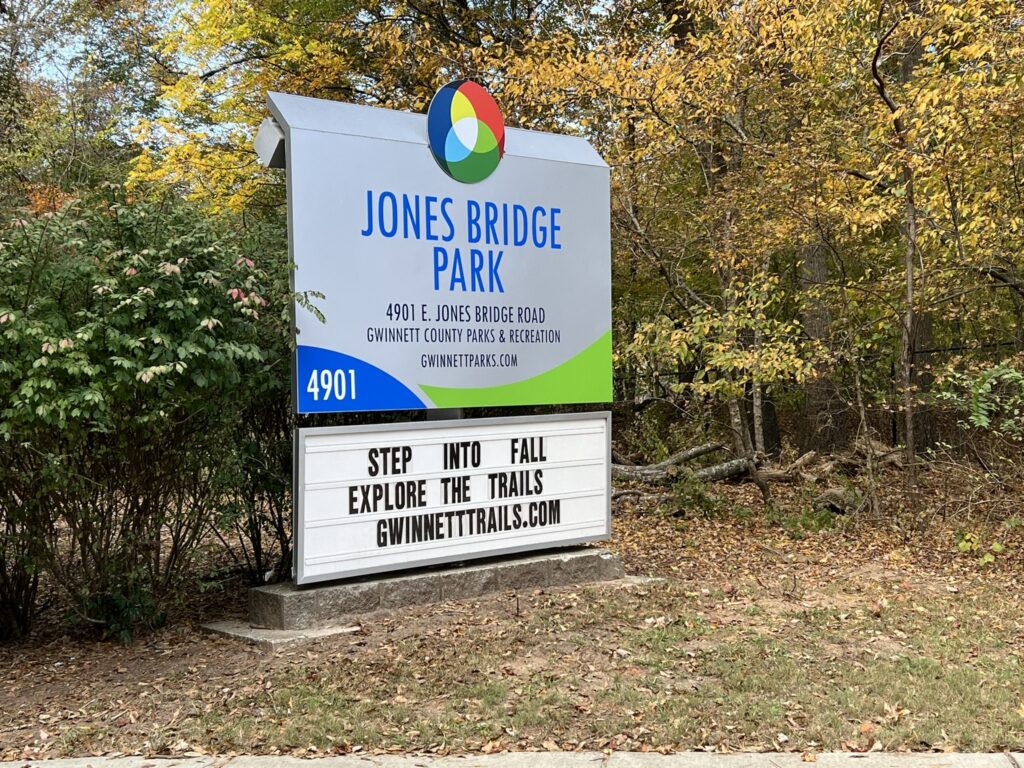
She added that Gwinnett DOT collaborated with the school district about placing parking deterrents on the street leading to the park.
“It’s technically Gwinnett County and Board of Education property where we decided to do the no parking,” she said. “We wanted to make sure that it didn’t impact the school.”
Gwinnett DOT is also looking to redo the pedestrian bridge on East Jones Bridge, with groundbreaking set for this spring.
“That will not impact any traffic — everything should be done fairly quickly,” Goalen said.
Crime, safety and communication
Major J.D. Griffin, west precinct commander for Gwinnett County Police, emphasized the department’s mission to improve community quality of life, but he noted that no one has contacted him about specific concerns despite multiple meetings.
“I hope that means that things are going well, but if not, make sure you if have any specific concerns or anything going on that you feel is not getting addressed that you reach out,” he said.
Major Griffin noted that from October 15 (the date of the last meeting) to January 7, there were 105 area checks, one arrest for drug possession and a few citations for people in the park after hours.
Christina Wagner, a nearby resident, pointed out that there were three-and-a-half-hours of fireworks going on in Jones Bridge Park on New Year’s Eve, despite park rules against it.
“I’m not sure if the flock cameras are working … because it obviously didn’t catch these people and [police didn’t] bother to drive through,” she said.
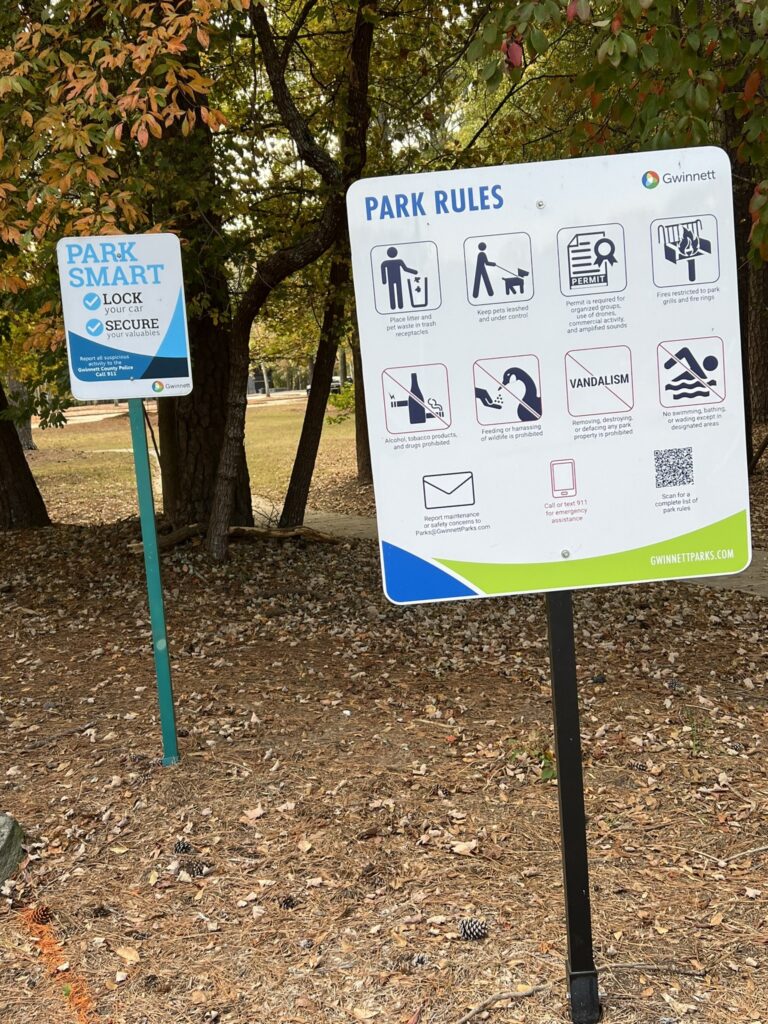
Major Griffin asked if she placed a call to the county police. She hadn’t.
“I just waited. I just wanted to clock and see how long the fireworks would go off without anyone doing anything,” she said.
Major Griffin emphasized that the cameras are license plate readers. They are in place to log activity in the event that there’s a complaint and/or an incident and are not effective in capturing such activities.
That led to the discussion of the need for better crime deterrent technology in the park.
Peachtree Corners Chief City Marshal Edward Restrepo weighed in.
“We’ve all thrown out some technology ideas over the last several months — just basically trying to see what’s palatable for everyone involved,” he said. “From the city standpoint, we’re willing to add whatever technology we feel will help supplement the flock cameras.”
Once the weather gets warmer, the plans for increased law enforcement presence will show if they’re effective.
Future meetings
Peachtree Corners Vice Mayor, Weare Gratwick, suggested the next meeting take place prior to Memorial Day to see how the process is going and to discuss any additional concerns before the unofficial start of summer.
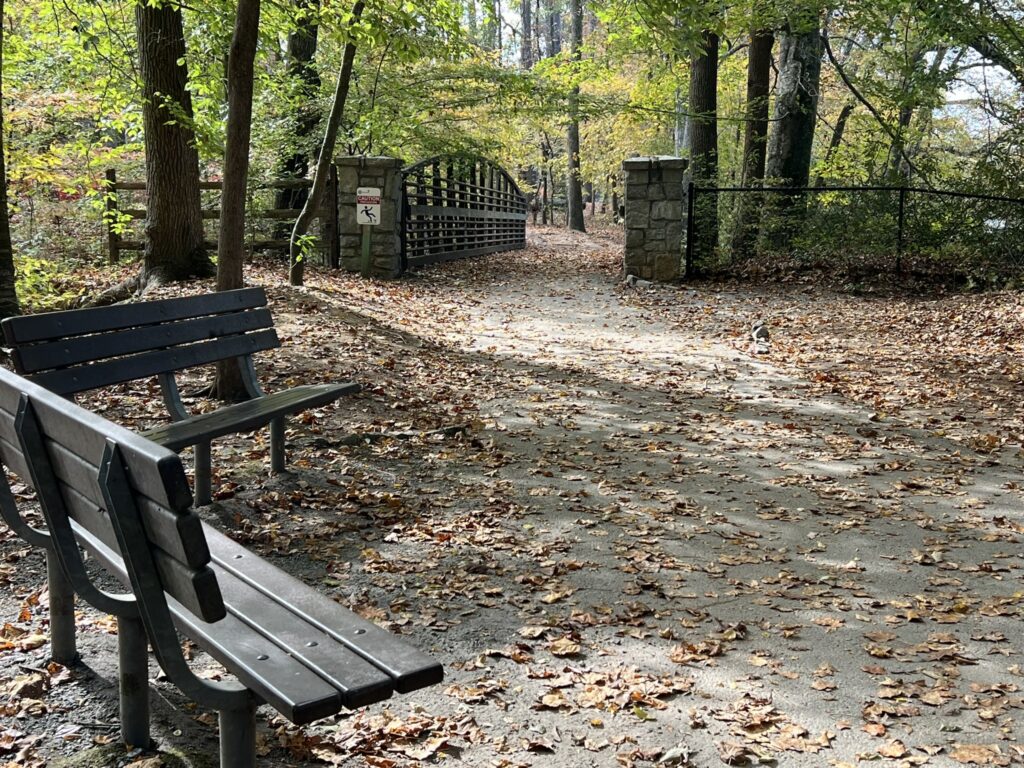
Everyone agreed, but Major Griffin asked to go one better. He suggested that there be a quarterly meeting to address community concerns and updates on park issues. Others asked that the time be more convenient for people who work during the day.
With that, the group agreed on the third Thursday of each quarter at 6:30 p.m. as the meeting start time.
The next scheduled meeting will be on May 15, with Gwinnett County Parks and Recreation in attendance.
Related
Parks & Recreation
Jones Bridge Park: Community Concerns and Steps Toward Solutions
Published
6 months agoon
October 29, 2024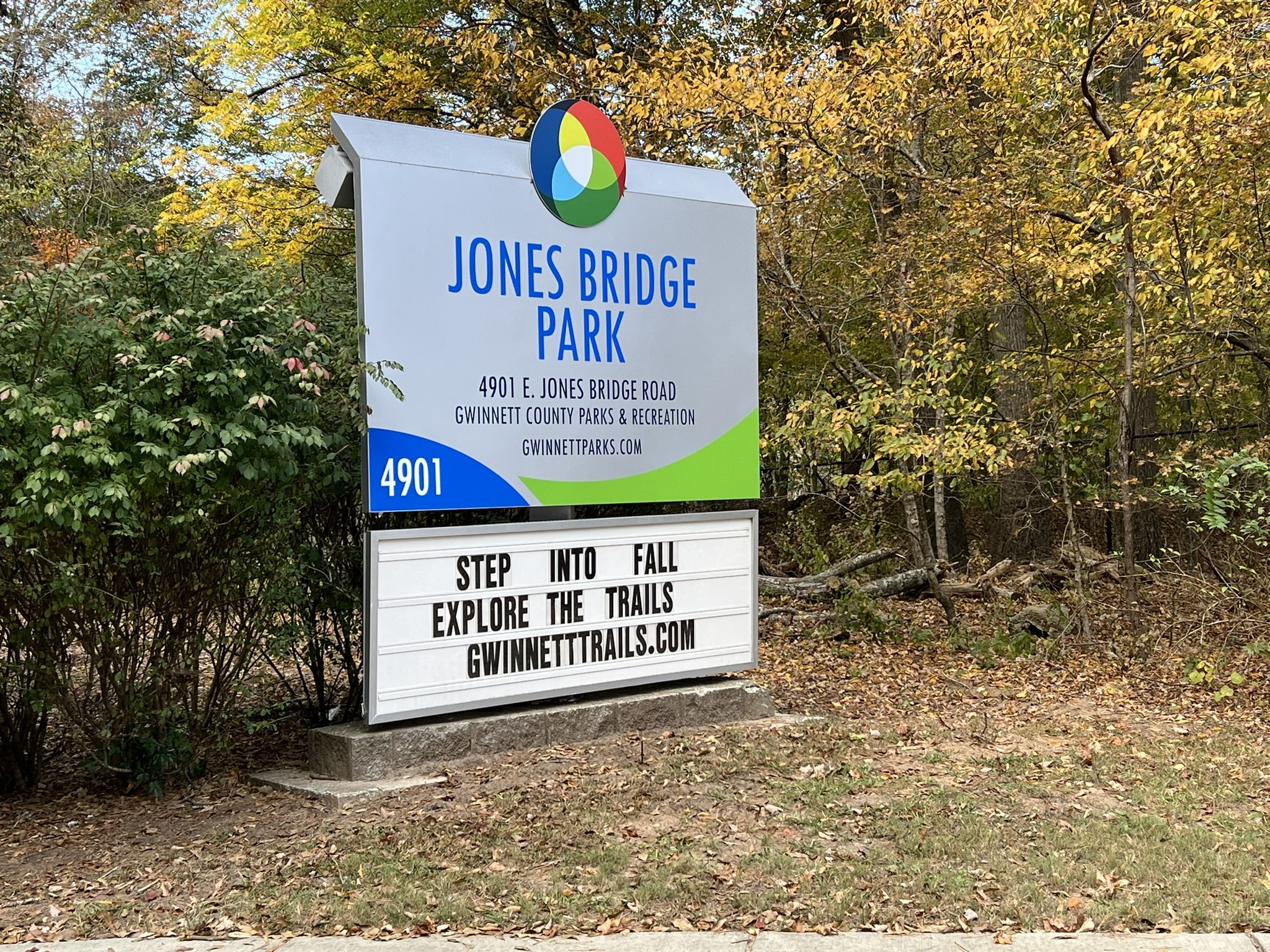
Updated with new headline and additional information on November 22, 2024.
Although Jones Bridge Park isn’t the largest in Gwinnett County, it’s one of the busiest, according to county officials. You don’t have to convince nearby residents of that. Christina Wagner lives in the Linfield subdivision. She and 17 of her neighbors met with Gwinnett County Parks and Recreation and Gwinnett County Police in late summer to voice concerns about illegal activity taking place there and what measures are being taken to curtail it.
A follow-up meeting was held on October 15 at Pinckneyville Community Center to report on the progress and what could — and should — be done going forward.
In the neighborhood
“This kind of meeting … is the result of residents who live in homes that are up against Jones Bridge Park or nearby neighborhoods that suffer the loss of quality of life at best,” said Peachtree Corners City Manager Brian Johnson. “There have been instances where somebody ran from police down into Jones Bridge Park. It’s a dead end. They bail and they’re running through neighborhoods in the middle of the night with law enforcement chasing them, including aviation units, like their helicopter, up with searchlights.”
Even though the park is Gwinnett County property, it’s within Peachtree Corners city limits, and residents have raised concerns to the city.
“Jones Bridge Park is unique in that it’s one of the few parks, at least in north metro Atlanta, that has access to the Chattahoochee River all the way down to where there are man-made improvements for you to get into the river, versus like walking down, unimproved,” added Johnson. “It’s also one of the few places that has, I wouldn’t call them rapids, but some whitewater right there.”
That makes the park attractive to many who come from outside the county to enjoy it.
Parking at the park
“Since our last meeting, we’ve done a few changes to Jones Bridge Park as requested at that previous meeting,” said Chris Minor, Gwinnett Parks and Recreation division director. “The rental hours have been shortened to 7 p.m., and in a few weeks, when times change, that will be backed up even further after dark. We have also installed barriers preventing people from parking alongside the road.”
He added that nearby construction has hindered some changes, but it should be finished soon.
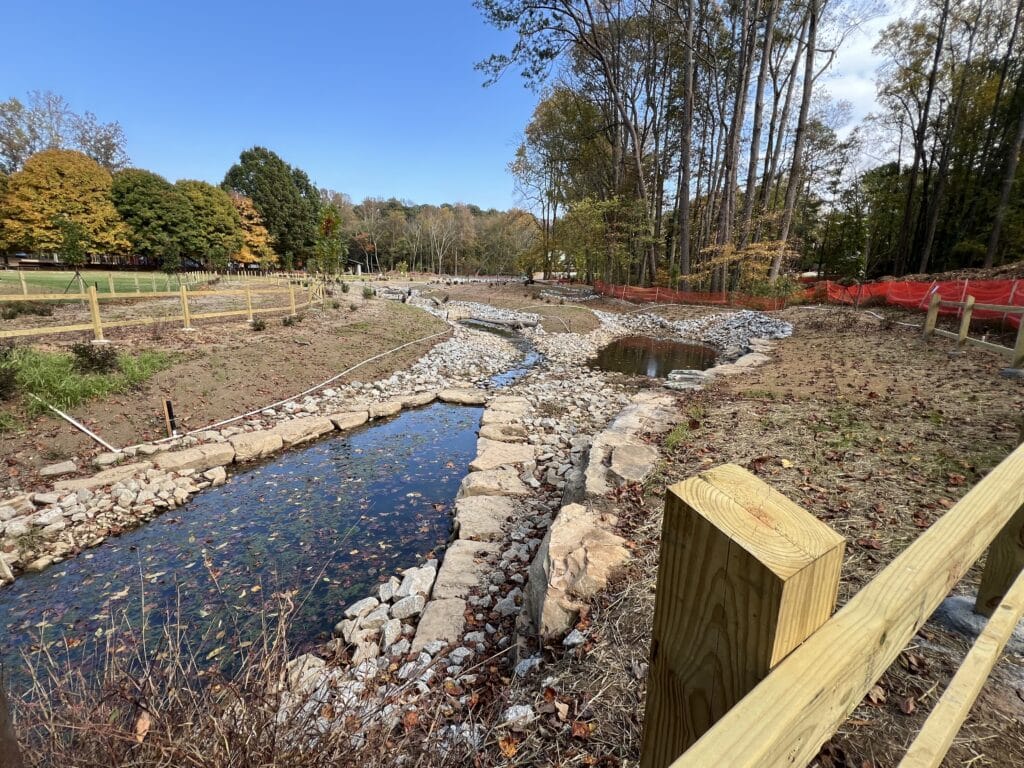
“At that point, we will evaluate our signs to install more and also finish adding barriers along that stretch of the park,” he said. “We are not going to move forward with the gate, but we do believe that the enforcement efforts … are making an impact in terms of what’s happening in the park that you all brought to our attention.”
An update from law enforcement
“When we met back in July, I know I said, I’ll get back with you after we’ve had some time, and then you tell me how and what kind of progress we’ve made,” said Major J.D. Griffin, commander of Gwinnett County’s West Precinct. “How do you feel in terms of safety? I can’t speak for the trash or the trucks driving too fast with the speed bumps, specifically, that kind of thing, but in terms of the safety of the park, how do people feel?”
“In the few times that I’ve driven through the park, all the cars were parked in parking spots. There weren’t any vendors, there wasn’t any music from the ice cream truck. So, during a couple of times I’ve gone in there, it’s definitely been positive,” said Wagner, adding that people who live closer to the park may have a different take.
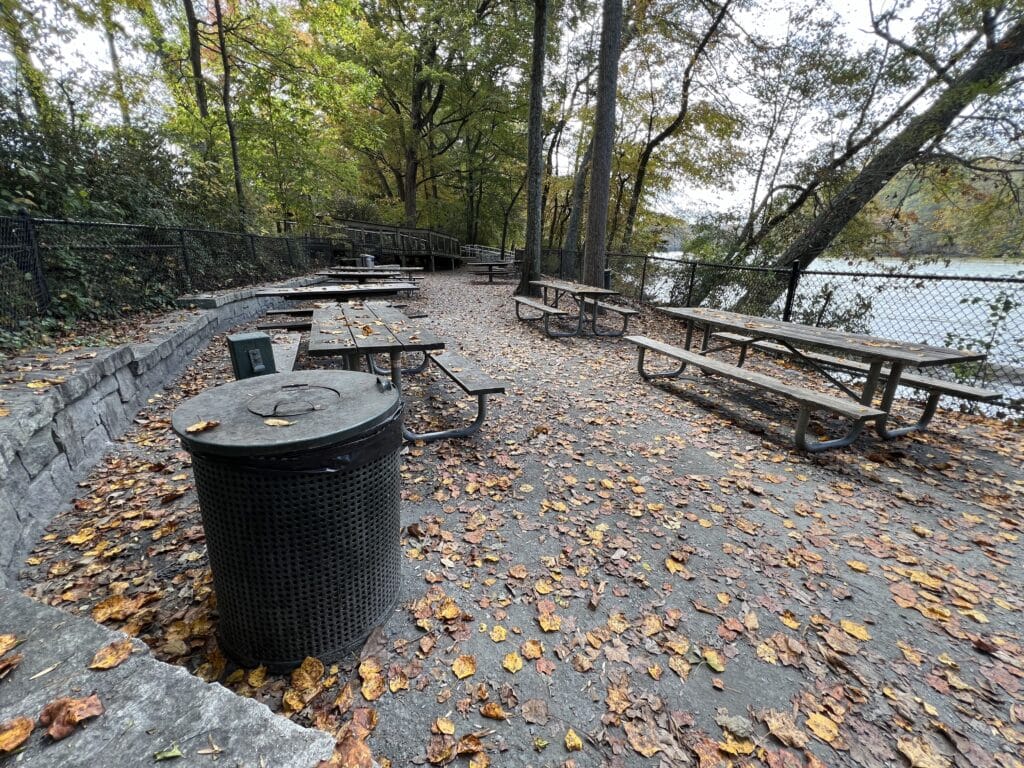
Every resident present mentioned noise from permitted and unpermitted events as well as trespassers after hours. After the July 25 meeting, Major Griffin immediately implemented heavy enforcement in the park. He said that from January 1 to July 25, GPD officers wrote about 42 citations. Since July 26, they’ve written 130.
“This gives you an idea of the increase in enforcement in the area,” he said. “One thing y’all said was that there was a large problem with parking.”
Impounding vehicles
On several days where large events took place, GPD was onsite to impound cars that were parked illegally.
“We tried to make announcements because we don’t want to just tow people’s cars for the sake of towing people’s cars,” Major Griffin said.
Just one vehicle had been impounded in the first seven months of the year. Since July 26, the county impounded 15 vehicles.
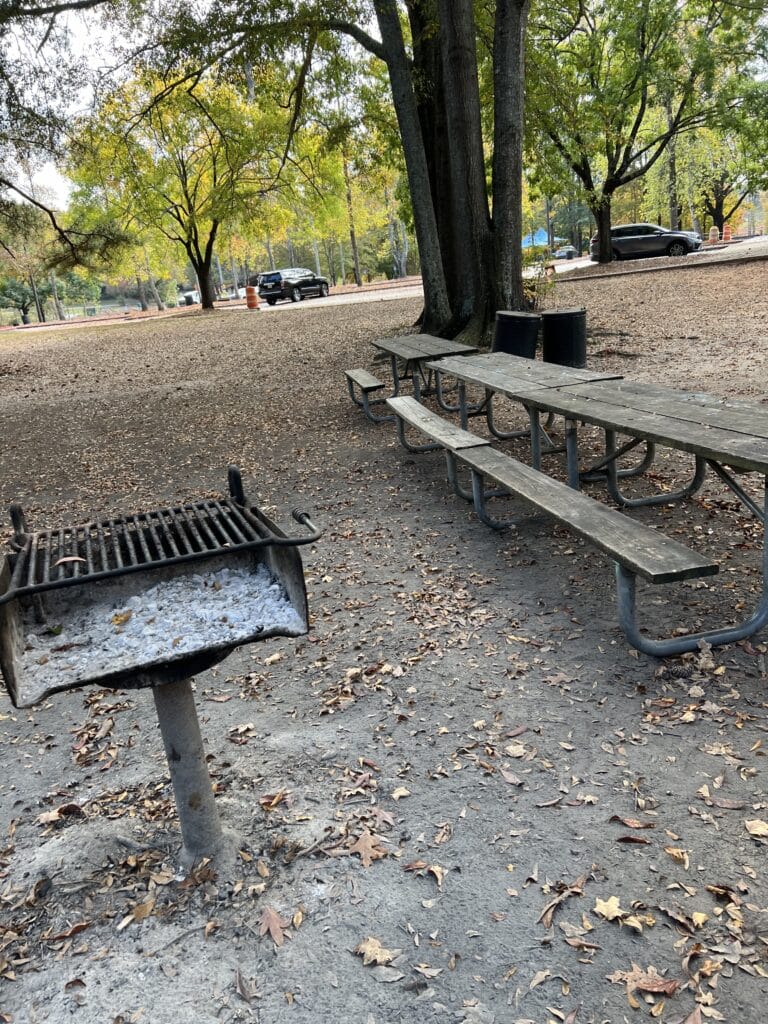
“What we were finding was, as we’re impounding five, six vehicles, other people are running out, realizing that our efforts on the PA system were genuine, and then started moving their cars,” he said. “So, we were actually seeing a higher violation rate when people were moving their cars out before we could address them.”
Going forward, Major Griffin said there will be an officer present during peak hours on Saturdays and Sundays. “Clearly the park has a lot of use,” he said. “In general, we’re trying to make it safe and people feel comfortable.”
Speeding and pedestrian safety
Another major complaint from neighbors is speeders racing through an area heavy with pedestrians — mostly children.
Sylvia Goalen, director of traffic studies for Gwinnett County Department of Transportation has been working with Wagner for a while about those concerns.
“We had identified ‘no parking’ areas to help mitigate some of the violations of parking concerns, and that was completed last week,” she said. “They [designated] no parking between the end of the school zone [to the area that the] parks maintain.”
Once the construction is complete, more signs will go up, Goalen said.

“We have already been looking to do additional speed studies way before I knew you guys were meeting, and we were able to finally create a project, get the funding and get that done,” she said.
Goalen checked out the handywork and realized the new speed humps looked so good that the old ones now need refreshing.
“When I leave from here, I am going to call my contractor. I’ll have them do an extra layer of asphalt, which will elevate them a couple of inches,” she said. “We can mark the back speed humps on the transportation [project list] right away.”

Goalen added that the department will assess if more speed humps are needed within the park and upgrade existing speed calming devices throughout.
“I don’t know when that road is going to be resurfaced, [but when it is] we will blow out all of the speed humps, put in the new asphalt, and then on top of that, add the new speed humps,” she said. “I can give you a tentative resurfacing date.”
Technology and enforcement strategies
Currently, there is one flock camera (license plate camera reader system) near the entrance of the park.
“As you approach the intersection, right before you get to Simpson Elementary, it’s right there,” said Major Griffin. “So basically, if you’re driving through, there is no other way to exit. … You’re either going to the school or you’re going to the park.”

Peachtree Corners Mayor Mike Mason offered city assistance in setting up as many cameras as needed.
Explaining the current camera setup and its effectiveness, Major Griffin said before anything else is added there should be an assessment of need. Perhaps license plate readers aren’t the only kind of cameras needed at the park. He added that he’s sure GPD can work with the Peachtree Corners city marshals to find the best solution.
A suggested gate for after-hours
Another suggestion was to install a gate to go down when the park closes. Although it wouldn’t keep out pedestrians, it would prohibit cars from entering the park at night. And the city offered to pay for it.
“The maintenance of it is negligible over a year,” said Johnson.
But the county didn’t like the idea.
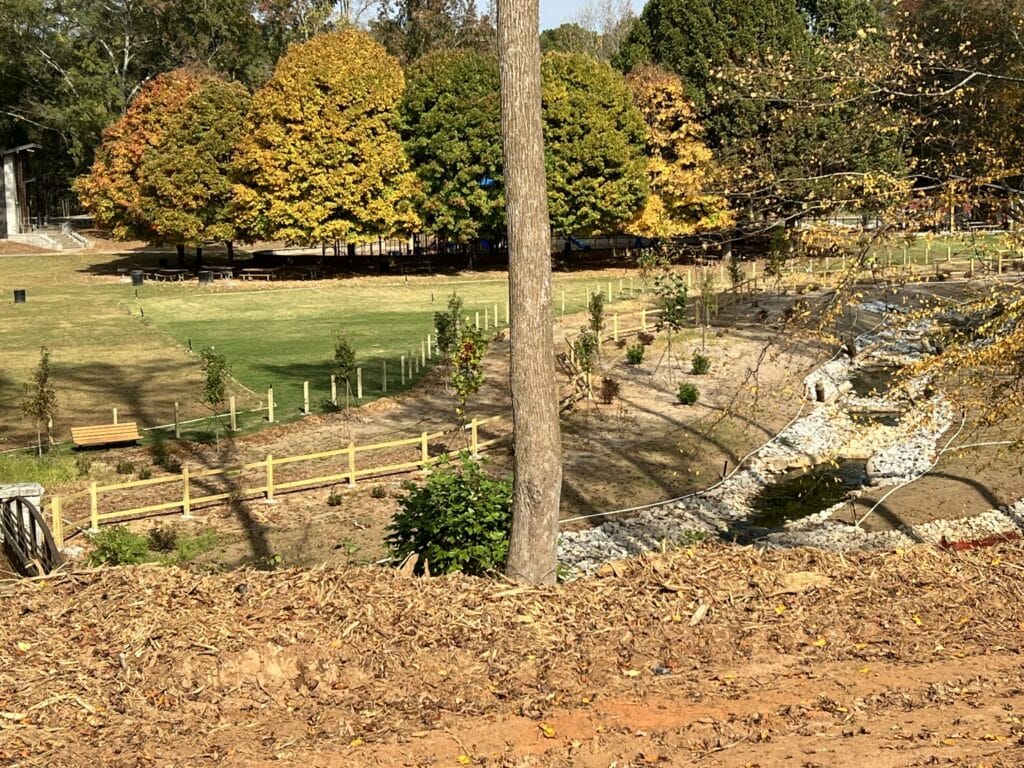
Minor said he’s hesitant to lock the gate for various reasons, primarily access. Who would be tasked with locking and unlocking the gate? And what if there’s a need to get an emergency vehicle inside the park while the gate’s locked?
“There are a lot of parks that are surrounded by neighborhoods,” he said. “So, this is not necessarily a unique situation with Jones Bridge. And I don’t say that to diminish your experience, because that’s your home, and I understand that, but only to put it in a larger context of the rest of the county.”
Johnson pointed out that the Fields Club has used residents to open and close gates with no issues.
“The residents that are nearby there just kind of organize a little spreadsheet,” he said. “[On their designated day, they] just go out and close it, lock it and it’s unlocked the next day.”
He said that when it started, Fields Club gave it a trial run.
“If this doesn’t work out well, we’re going to have to not allow you to do it anymore,” he recalled. “It’s worked out so well, so I’m not sure why Gwinnett didn’t say ‘we’ll try it unless you screw it up.’”
Johnson said the city has even offered to buy and install a vehicular gate similar to those at railroad crossings.
“We researched ones that automatically go down at a certain time and go back up at another time so it could be programmed to do it automatically, and it was remotely accessible so that emergency services could have it go up [if needed],” he said. “We offered to donate and install it if Gwinnett would then take it over, because it would be securing their park, and it would be at their entrance, and we don’t have the authority to restrict some access to property that the city doesn’t own.”
Johnson said the price quoted was $1,000 a year to maintain.
“Mind you, this is an organization that has over a billion-dollar budget. But $1,000 a year, and they have declined that option as well. So, I’m not sure where we will go,” said Johnson.
Noise complaints and pavilion power
One participant mentioned that some public venues cut the power to the pavilions after hours to quell usage of loudspeakers and lights.
“I would personally like to see that happen because I’m really tired of hearing music blasting,” said Wagner. “It’s like it’s in my house, and my house isn’t anywhere close to where the pavilion is located.”
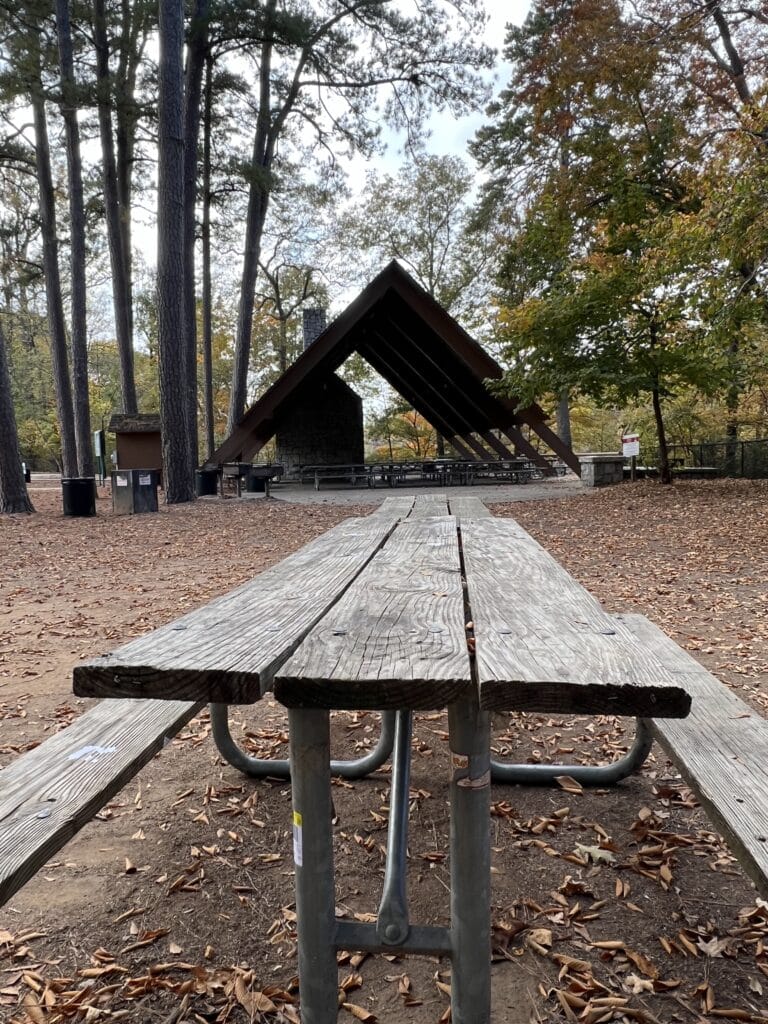
Minor said that Jones Bridge Park may have more issues than others because of its high usage.
“Usually we’ll hear [that] the fields are too loud, or the PA system is too loud on a Sunday or Saturday when kids are playing games, things of that nature. Pavilions, not quite as much, but it sounds like people are getting out there and just going way beyond the noise ordinance at Jones Bridge,” he said.
Other than cutting power, using an automatic sprinkler system may be another solution.
Next steps
Wrapping up the meeting, Minor emphasized the importance of community input and the need for effective enforcement to protect neighborhoods. He vowed to work with residents near the park to ensure their rights are looked after just as much as those whose right it is to use the park.
The suggestions and recommendations will be assessed, and a follow-up meeting has been set for 2 p.m. on January 8 at Pinckneyville Community Center.
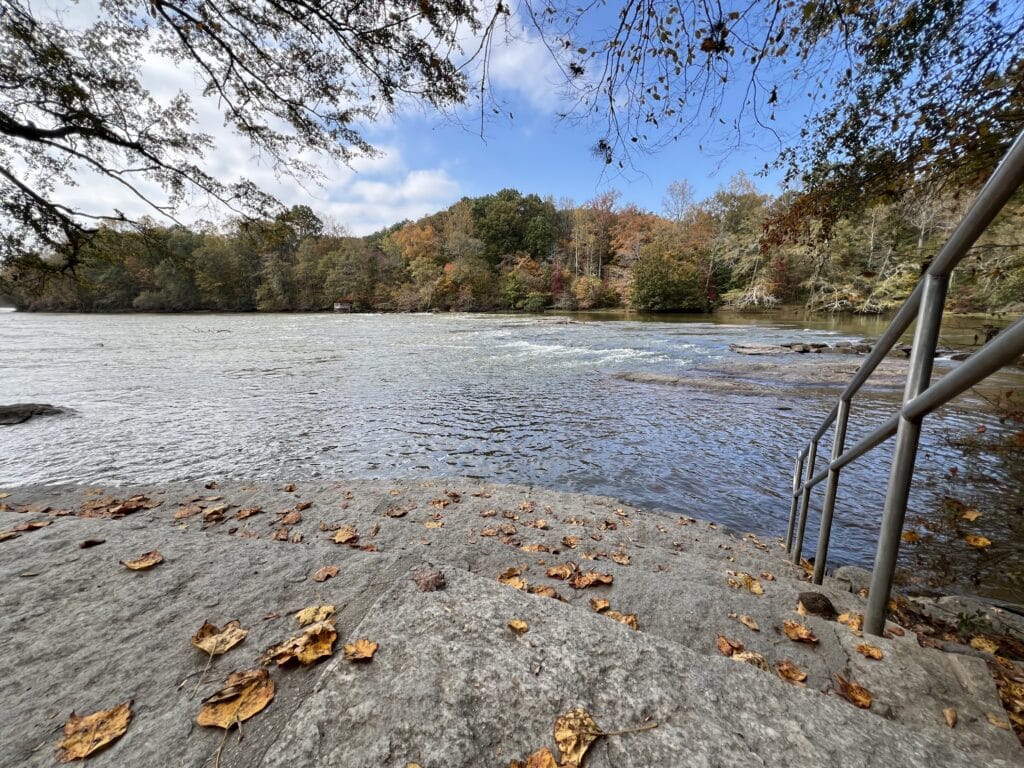
For more about Gwinnett County Parks, visit gwinnettcounty.com/departments/communityservices/parksandrecreation.
Related
Read the Digital Edition
Subscribe
Keep Up With Peachtree Corners News
Join our mailing list to receive the latest news and updates from our team.
You have Successfully Subscribed!

GA Tech, Peachtree Corners Solidify Partnership with First-of-its-Kind Venue

Peachtree Corners City Guide 2025: Spring/Summer Digital Edition

Two Peachtree Corners Business Leaders Named Finalists for EY Entrepreneur Award

GA Tech Launches First-of-its-Kind GT Atrium in Peachtree Corners

Katherine Lafourcade — A Journey of Passion, Resilience and Giving Back

PCBA Announces 2025 Scholarship Winner

Paul Duke STEM High School Student Earns CGO Scholarship

Paul Duke STEM High School Student Earns CGO Scholarship

PCBA Announces 2025 Scholarship Winner

Katherine Lafourcade — A Journey of Passion, Resilience and Giving Back

GA Tech Launches First-of-its-Kind GT Atrium in Peachtree Corners

Peachtree Corners City Guide 2025: Spring/Summer Digital Edition

Two Peachtree Corners Business Leaders Named Finalists for EY Entrepreneur Award

GA Tech, Peachtree Corners Solidify Partnership with First-of-its-Kind Venue

SCB Construction Group Partners with CGA Reps on New Peachtree Corners HQ

Light up the Corners [Video]

Capitalist Sage: Business Leadership in Your Community [Podcast]

Cliff Bramble: A Culinary Adventure through Italy

Top 10 Brunch Places in Gwinnett County

A Hunger for Hospitality

THE CORNERS EPISODE 3 – BLAXICAN PART 1

Top 10 Indoor Things To Do This Winter

The ED Hour: What it takes to Remove Barriers from Education
